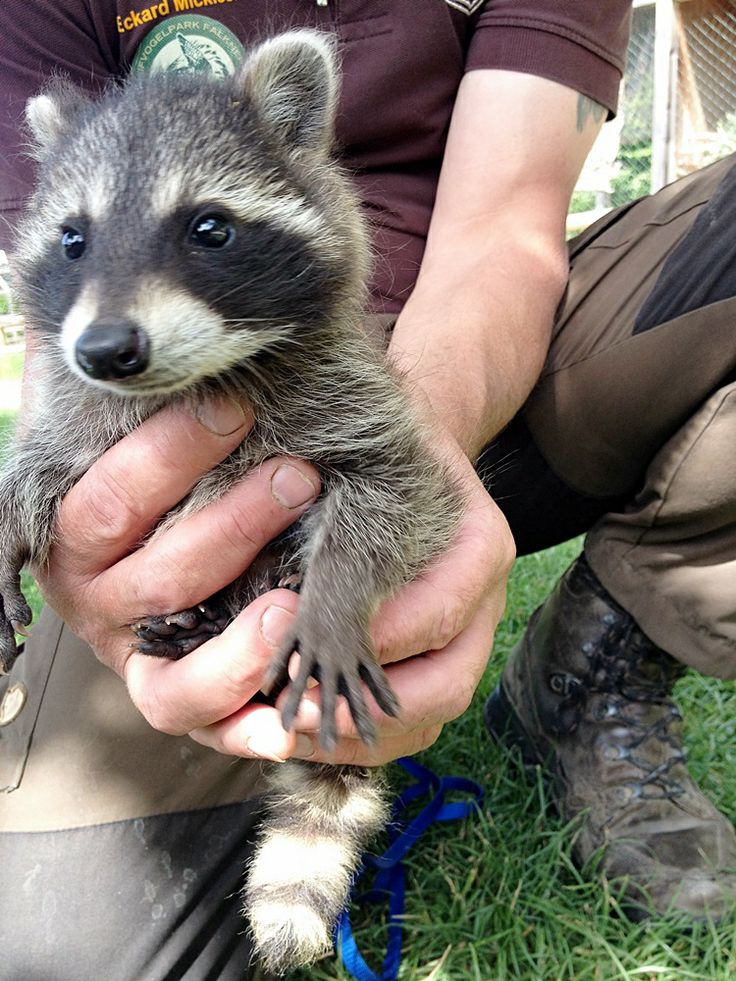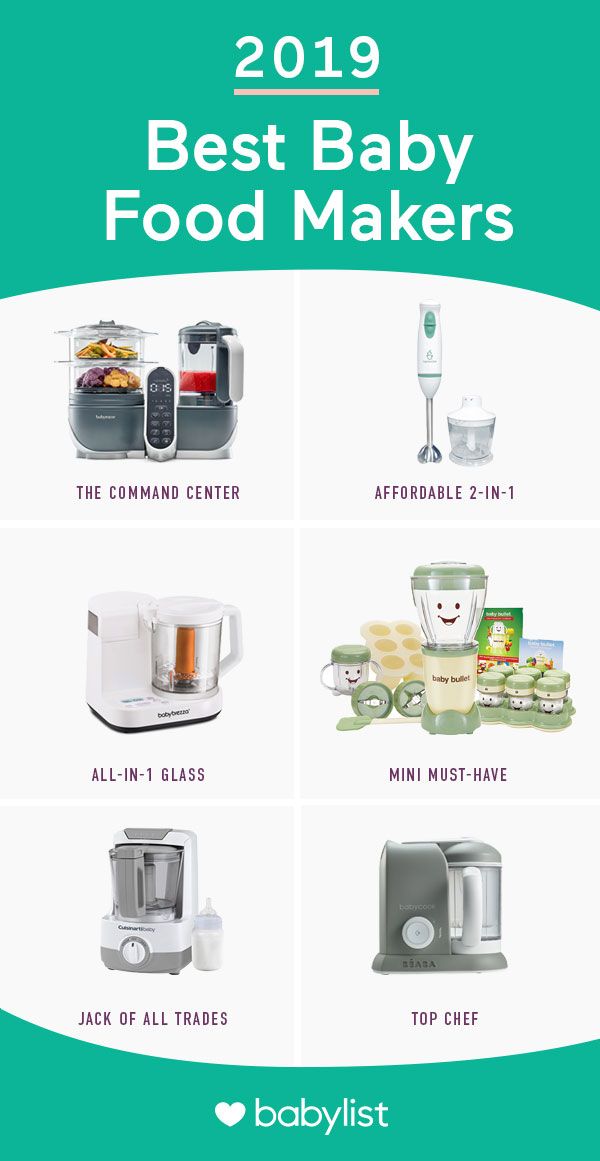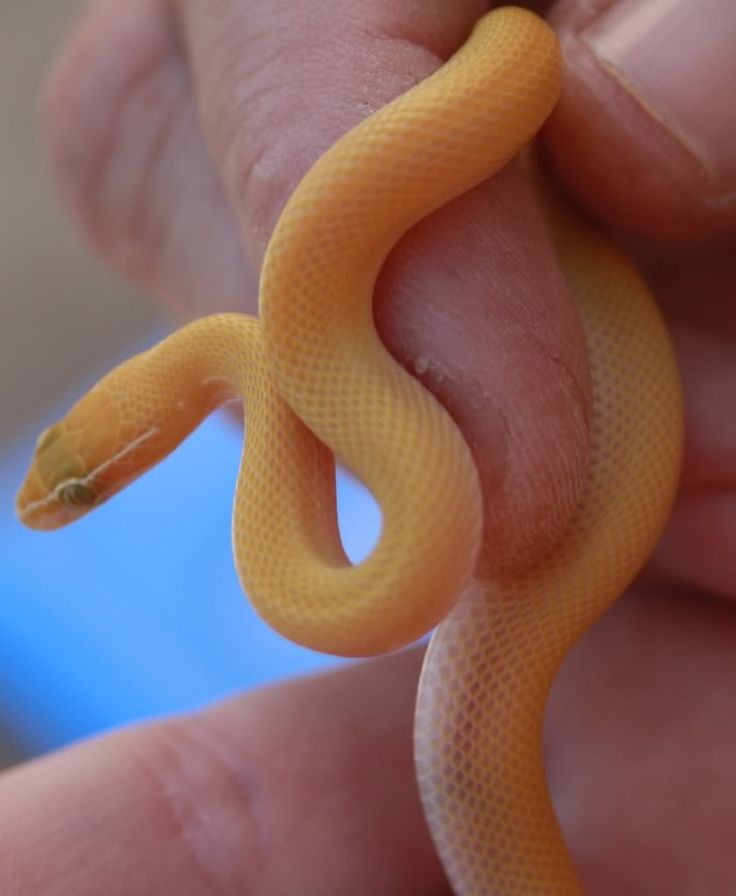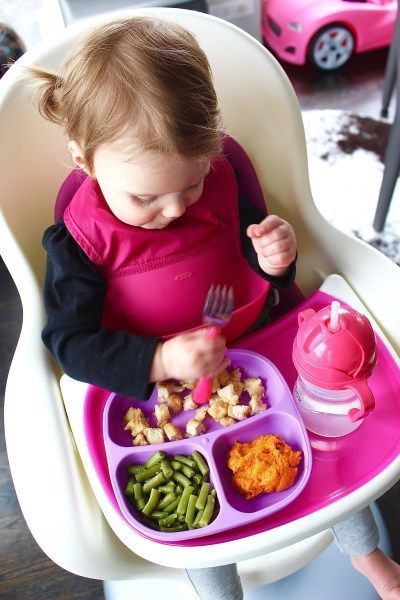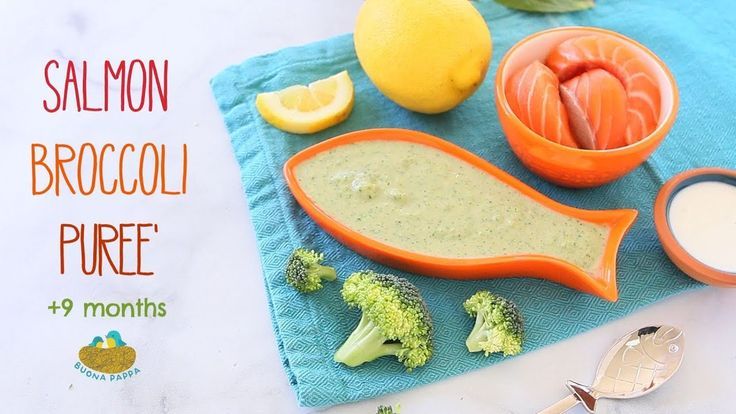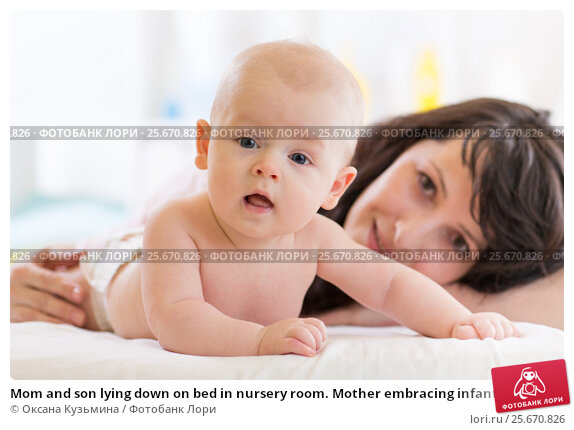Baby raccoon feeding schedule
What Do Baby Raccoons Eat?
So you finally have your pet raccoon. You are now ready to start your adventure of raising a baby raccoon. So as you arrive home with your new pet, eager to take care of him, this is the first question you need to answer: What do baby raccoons eat?
If you wanted a head start on your relationship, you probably bought a raccoon that is still on the bottle, which means a very young raccoon. Purchasing a raccoon that is still on the bottle is necessary for the bonding process. But taking care of these critters is in itself a challenging and demanding task. You need to establish a friendly relationship with the animal from an early age. Such an approach will prove beneficial in the long run and you will experience fewer problems with your pet.
What To Feed Baby RaccoonsThis is your first encounter with the demanding task of having a pet raccoon. The question, “what do baby raccoons eat”, is quite simple: powdered milk with high fat content. Just keep in mind this important information — never feed your little raccoon whole milk.
If the food your new pet requires is quite simple, the how and when of feeding are a different story.
For about the first seven weeks of life, you need to feed the baby raccoon up to five times a day. To feed him at regular intervals, you will even need to wake up during the night and respond to his pleas for food.
How much food do baby raccoons eat? While they are nursing, they may easily overfeed. You must give your raccoon just enough to feel that his belly is full. Do not wait until he starts to refuse the milk because this is a sign that he has already had too much.
After each feeding you should burp the raccoon, and at the same time, using a cotton ball soaked in warm water, massage the genital area to help him relieve himself.
The first few weeks will definitely be an amazingly busy time for you and your new pet raccoon. But after the first few weeks, the baby raccoon will be ready to get into some solid foods.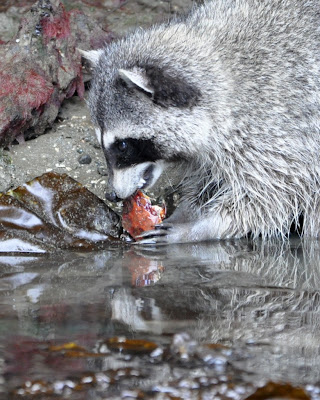
Weaning a raccoon is not difficult, though some individuals may be harder to bottle-break than others.
When you see that your pet is big enough, usually around the seventh or eighth week, you can start to introduce some of the foods raccoons will eat as an adult.
After the bottle, your raccoon will begin to show his omnivorous side, and he can start to eat almost any kind of food. Even so, you should introduce the food gradually. You might, for instance, add baby cereal to the milk or give him a soft food like fruit that he is able to chew.
What Do Baby Raccoons Eat After WeaningAfter your baby raccoon has been weaned, the task of feeding the animal will still be demanding. It may be easier than bottle-feeding, but controlling your pet’s diet will always be your responsibility.
Raccoons living in the wild can eat practically anything, and their diets are pretty variable.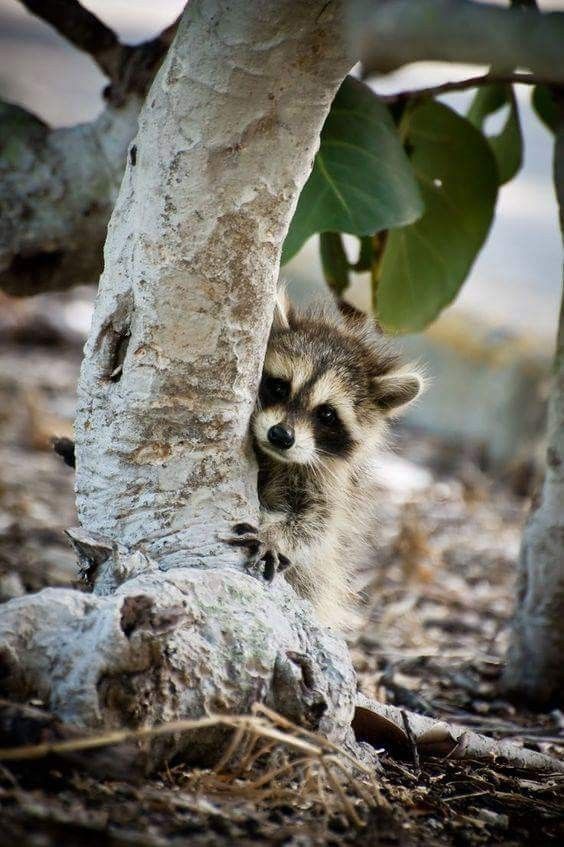 The wild raccoon diet depends on the animal’s personal instincts and the different seasons and habitats he is dealing with. In contrast, a pet raccoon cannot make his own decisions about food. He is completely dependent on you.
The wild raccoon diet depends on the animal’s personal instincts and the different seasons and habitats he is dealing with. In contrast, a pet raccoon cannot make his own decisions about food. He is completely dependent on you.
You cannot treat your raccoon like a dog or a cat; it is not that simple. These common pets can survive on canned food, but not your pet raccoon. He may love cat or dog food in the can, but feeding him only that is not healthy for the animal. Make sure to give your pet a variety of food items daily and to choose the healthiest ones.
Baby Raccoon - What you Need to Know
Raccoons just like most mammals are excellent mothers; they take good care of their young ones. When raccoon babies are born, they stay in the nest while the adult female raccoons go out to forage for food to help them produce enough milk to feed their young. After about 12 weeks of nursing, the baby raccoons are finally old enough to follow their mother out of their nesting area.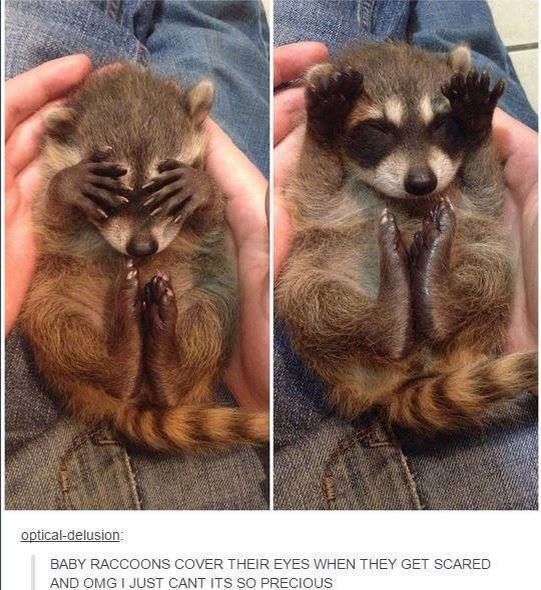 During this time, they will learn from their mother how to forage for food, and where to look.
During this time, they will learn from their mother how to forage for food, and where to look.
Baby raccoons are dependent on their mother for up to nine months, after which they will go their way. The mother raccoons give birth to up to nine pups. After nine months she will only have two left, after which she will look for a new mate to make another litter during winter.
What do baby raccoons eat?
Raccoons are omnivorous; they will eat just about anything they get their paws on. However, baby raccoons are entirely dependent on their mothers’ milk. She often goes out to forage for food to be able to produce a sufficient amount of milk.
When baby raccoons are born, they are both blind and deaf for about the first three weeks but they grow very fast. During this period the baby raccoon will feed on its mother’s milk until it is old enough to follow her out of the nest. Raccoons nest in hollow trees or attics to keep their young safe. One of the main threats to baby raccoons is predators such as coyotes.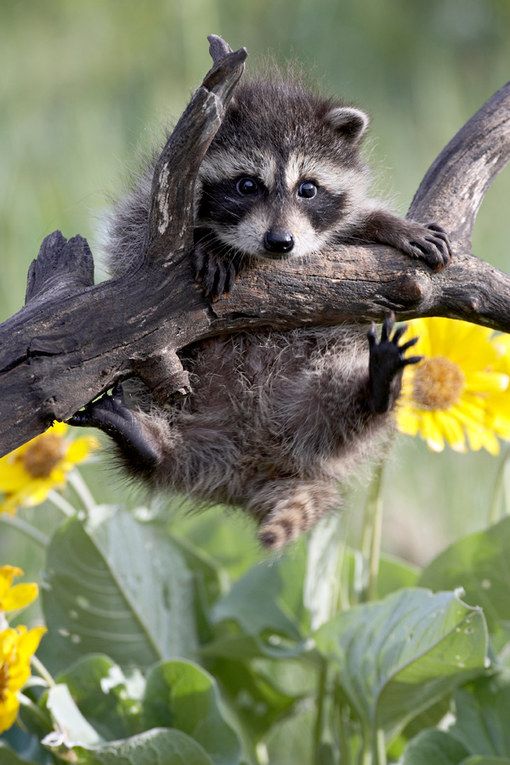 The young ones will stay with their mother through the first winter after which they will gradually leave.
The young ones will stay with their mother through the first winter after which they will gradually leave.
Caring for a baby raccoon isn’t an easy task for the mother. While they typically rely on milk, they have to be fed round the clock. Raccoon mothers feed their babies every four hours, that is at least five times a day. The mother raccoon spends most of her time in the nest attending to her young. The female has a duty of raising her young, and she does this all on her own.
After around six weeks, the baby raccoons are ready to start eating solid food. While they follow their mother and learn how to look for food, they are introduced to eating nuts, insects, fish, frogs, and berries. Raccoons are very adaptable animals, and after a few more weeks, they will slowly start going their way and will be less dependent on their mother.
Are baby raccoons dangerous?
A baby raccoon looks very similar to an adult raccoon, and the only distinguishing factor is its size.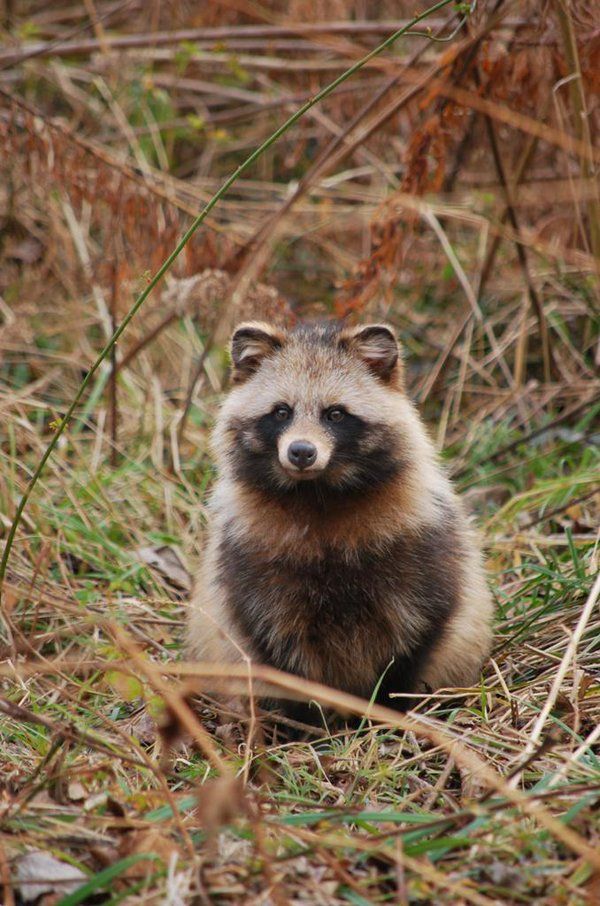 The newborns are deaf and blind for up to three weeks, and they are dependent on their mothers. If you have spotted a litter of raccoons on your property, you are probably wondering if they are dangerous.
The newborns are deaf and blind for up to three weeks, and they are dependent on their mothers. If you have spotted a litter of raccoons on your property, you are probably wondering if they are dangerous.
Well, while baby raccoons look cute and cuddly, it is important to note that they are wild animals, and could be potentially dangerous even at an infant stage. Baby raccoons are not yet old enough to be aggressive to bite and scratch, but their mother is. It is important that you only handle baby raccoons when you are certain their mother is not loose. Mother raccoons make awesome caregivers, and will not hesitate to attack humans close to their nests.
Raccoons are known to spread a variety of harmful diseases that could be transmitted to pets as well as humans. Therefore, when handling baby raccoons, you need to be extra careful. If you are unsure of yourself, contact your local wildlife service to get rid of them for you. However, if you are willing to do it yourself, make sure you wear protective clothing which includes gloves, boots, a mask, and long-sleeved pants. Raccoon droppings often have parasites that can be transmitted to humans through contamination, soil, water, or by breathing dried-up particles of their droppings.
However, if you are willing to do it yourself, make sure you wear protective clothing which includes gloves, boots, a mask, and long-sleeved pants. Raccoon droppings often have parasites that can be transmitted to humans through contamination, soil, water, or by breathing dried-up particles of their droppings.
Baby raccoons could also be carriers of rabies. Raccoons are a vector carrier of rabies, and chances are the baby raccoons you are about to handle are also infected. Rabies is a viral disease that affects the central neural system and is usually spread through the bite of an infected animal. While the baby raccoon is incapable of biting you at a tender age, there have been cases of people going through rabies treatment after handling young infected babies. It is not only what the animals have but also what feces are left behind. Oftentimes feces removal is required after a raccoon and baby removal.
What do you call a baby raccoon?The correct name for a baby raccoon is a kit or a cub.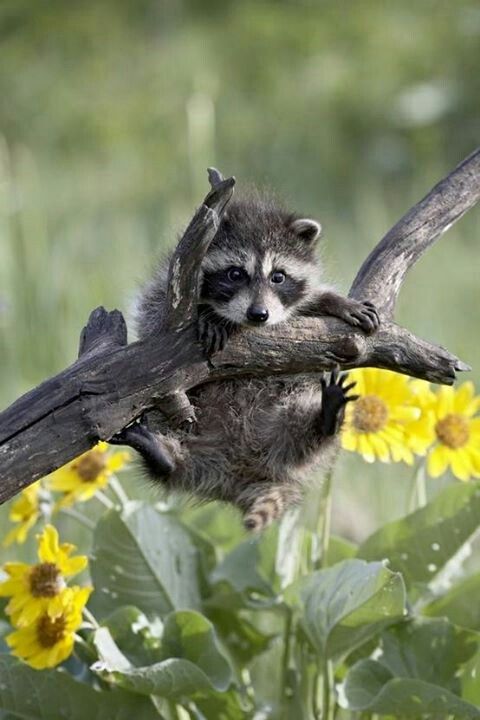 Both these terms are widely used to describe baby raccoons.
Both these terms are widely used to describe baby raccoons.
However, a page on raccoons on the Smithsonian Museum of Natural History (Washington DC) website refers to raccoon babies as “cubs.” But the Canadian Wildlife Federation uses the term “kit,” as does the University of Pennsylvania, School of Veterinary Medicine.
So, either kit or cub is an acceptable moniker for a baby raccoon, depending on where you live.
When do baby raccoons leave the nest?Raccoon breeding season is anytime from December through to June, although most activity usually happens around February.
The mother raccoon is pregnant for between 63 and 65 days, giving birth to two to five babies in April or May. The newborn babies are helpless and blind until their eyes open at about three weeks of age. Between four to six weeks, the baby raccoons begin to stand and learn to move around the den. Sometimes, the mother carries her babies one by one in her mouth until they are fully mobile.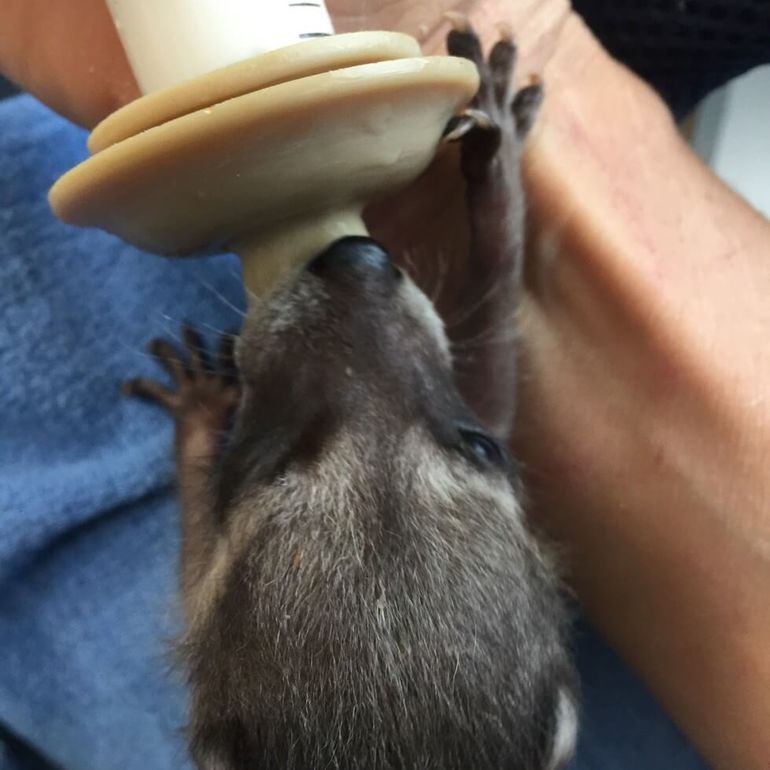
Once they reach eight weeks old, the baby raccoons typically leave the den and follow their mother to a new location. During that time, the mother teaches her family how to forage for food. Raccoon fathers do not play a role in raising their young; that task falls exclusively to the babies’ mother.
How long do baby raccoons stay with their mother?Baby raccoons are weaned off their mother’s milk when they are about 12 weeks old. Occasionally, the youngsters disperse during the fall or early in the winter of their first year, but it is more usual for the babies to overwinter in a den with their mother until the following spring. Raccoons don’t hibernate, preferring to huddle together as a family in their den until the harsh winter weather abates.
Unlike some species, raccoons raise their young in isolation, and they do not have babysitters for their youngsters. So, that means busy raccoon mothers do have to leave their family unattended for quite long periods of time while they go foraging for food. Older baby raccoons often become adventurous, venturing out of the den while mom is absent. That’s usually when homeowners come across a baby raccoon and assume it’s been orphaned, which is most likely not the case at all.
Older baby raccoons often become adventurous, venturing out of the den while mom is absent. That’s usually when homeowners come across a baby raccoon and assume it’s been orphaned, which is most likely not the case at all.
Once the baby raccoons reach ten months of age, they will be independent. At that time, the youngsters, especially females, will often decide to build dens close to their mother. So, during the spring, many young raccoons are searching for a suitable den site in which to raise their own families, which could include your walls, attic, or chimney.
What does a raccoon nest look like?Although they do nest in trees, the perfect place for raccoons to nest and raise a family is the sheltered, warm environment of your attic or some other area in your home.
Squirrels also like to take up residence in attics and are just as big a nuisance as raccoons. But how can you tell the difference between a raccoon nest and a squirrel nest?
Raccoons build a bed, rather than a nest, and these resourceful creatures are not fussy about what they use for nesting materials.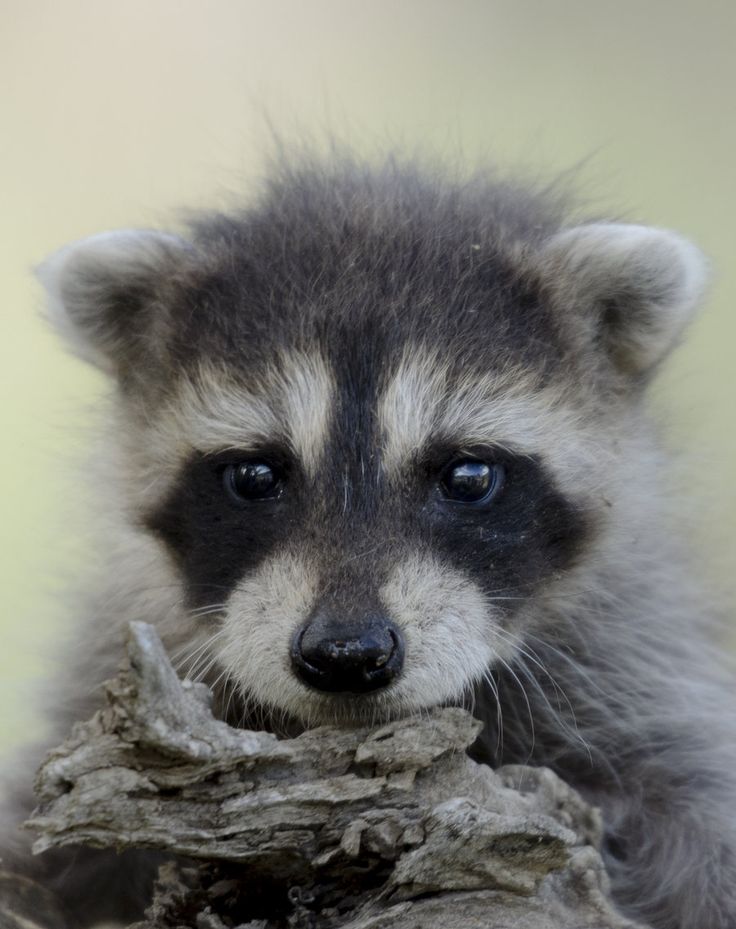 The most commonly used nesting materials for outdoor-dwelling raccoons are hay and long grass.
The most commonly used nesting materials for outdoor-dwelling raccoons are hay and long grass.
However, away from the elements inside the haven of your attic, raccoons are quite happy to use your insulation to create a cozy bed. A mother raccoon can wreak havoc in your home by shredding your insulation until she has a pile of material that’s deep enough to burrow inside. Given that adult raccoons grow to the size of a small dog, that’s a lot of insulation!
A squirrel nest tends to be more intricately constructed than that of a raccoon, but it isn’t very easy to tell the difference if you don’t have a trained eye. For that reason, you are strongly advised to ask a professional wildlife relocation service contractor to take a look at the nest for you.
What to do if you find an injured baby raccoon
It’s not uncommon to find baby wild animals outside, especially during spring going about their business. Most people often find the need to help baby raccoons when they find them alone on their property.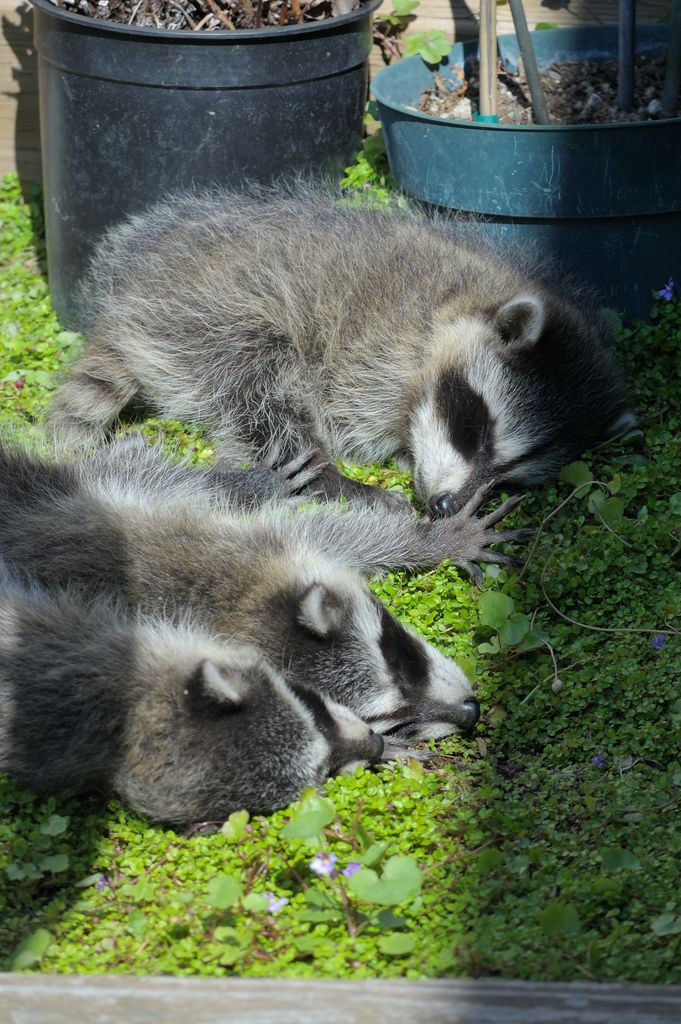 However, while they might seem like they need our help, you should not take that step until you are 100% certain.
However, while they might seem like they need our help, you should not take that step until you are 100% certain.
How will I tell if the baby raccoon is Injured or needs my help?
A baby raccoon needs your help if:
- It is presented to you by a cat or a dog
- You can see there is evidence of bleeding
- You spot an apparent or obvious broken limb
- The baby raccoon is shivering
- There is a dead parent nearby
- The baby raccoon is wandering and crying all day.
If you find a baby raccoon in any of the above conditions, the first thing you need to do it to keep it contained. This gives you time to figure out how you will help it. It’s important to wear protective clothing before handling any raccoon even at a tender age. If you are unsure of how to handle it, call our raccoon removal Scarborough service to help you out. https://youtu.be/NIQ7n_rhMYs
Baby Raccoon Removal Process
Approach the baby raccoon from behind and drop a towel on the animal, make sure it covers the body as well as the head and immediately place it in a container.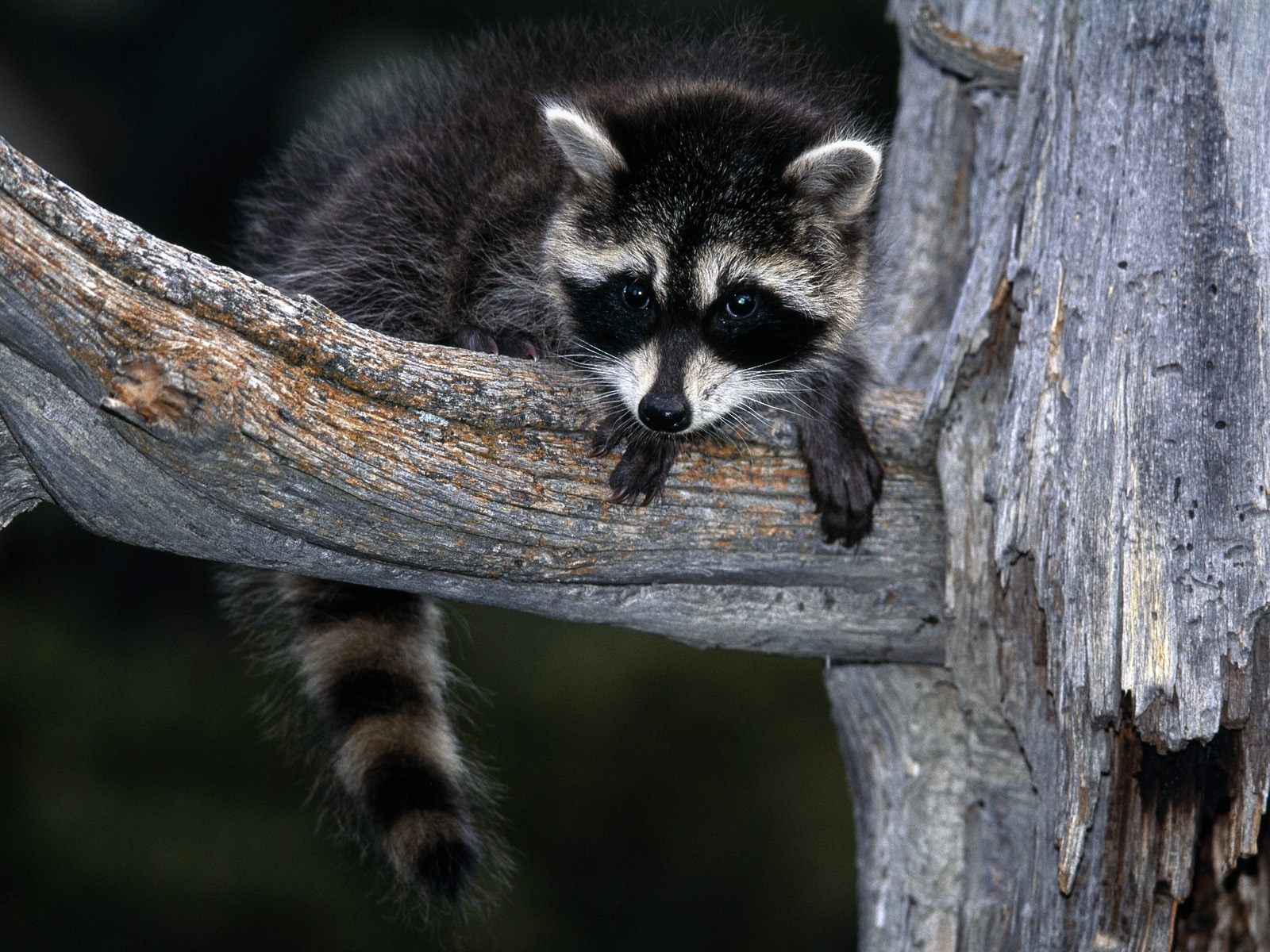 Seal or cover the container to prevent it from getting away.
Seal or cover the container to prevent it from getting away.
Smaller baby raccoons
If the raccoon in question is about three weeks old, put it in a cardboard box with a t-shirt or a soft towel to keep it warm and cozy. It doesn’t matter how hot it is outside; baby raccoons get cold, offer it a heat source.
Larger baby raccoons
Larger baby raccoons can be lured or put into a dog or cat crate. You could also place a laundry basket or cardboard box over them. Reinforce this by placing something heavy on top to reduce movement. Keep the baby raccoon in a warm dark, quiet place. Do not feed it, and call your local wildlife service right away.
Can I transport the injured baby raccoon?
Depending on where you find the injured raccoon, you could transport it to the nearest animal facility including:
- A wildlife rehabilitator
- Local veterinary clinic
- Local animal control agency
Remember, when transporting the animal, ensure that it is safely secured in a cardboard box or crate.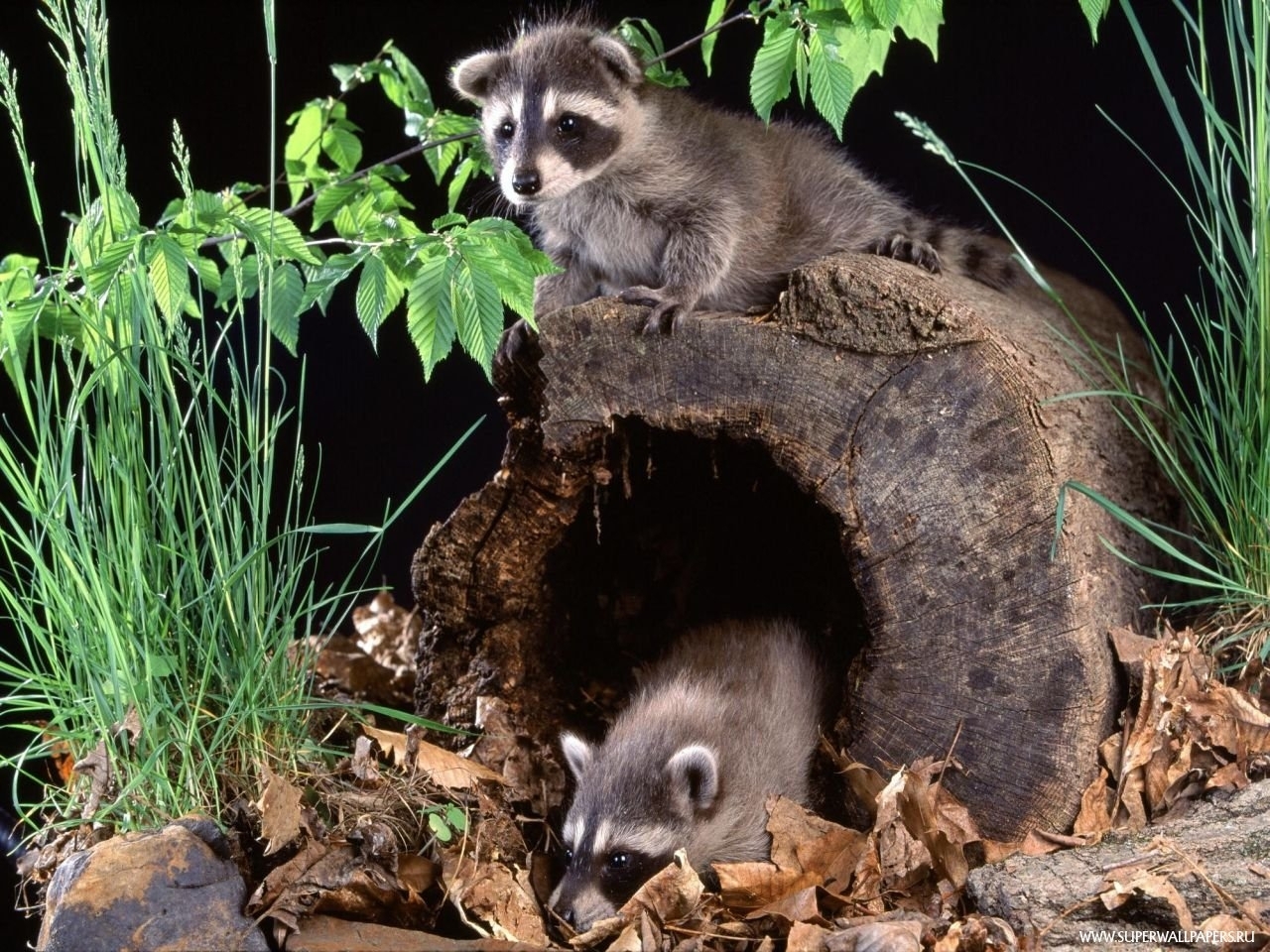 Also, ensure the car is as quiet as possible. Raccoons hate noise, if possible, avoid turning on the radio. We highly recommend that you do not transport or handle baby raccoons on your own. Raccoons carry parasites that could be passed on to you and your pets. Having a baby raccoon in your car or household could potentially expose you and your family to diseases.
Also, ensure the car is as quiet as possible. Raccoons hate noise, if possible, avoid turning on the radio. We highly recommend that you do not transport or handle baby raccoons on your own. Raccoons carry parasites that could be passed on to you and your pets. Having a baby raccoon in your car or household could potentially expose you and your family to diseases.
How to reunite an injured baby raccoon and mother
Sometimes, during nursing, a baby raccoon can fall out of its nest and get separated from the rest of the litter. If you spot such a raccoon, first check if it is injured, in case it isn’t, the best possible option is to get it back to its mother. Raccoons just like most mammals make excellent mothers and will come back looking for its baby if given a chance. An adult female raccoon will take care of its baby better than any human or wildlife care center could do.
Baby Raccoon and GarbageWear protective clothing, and safely secure the raccoon into a cardboard box with a heat source.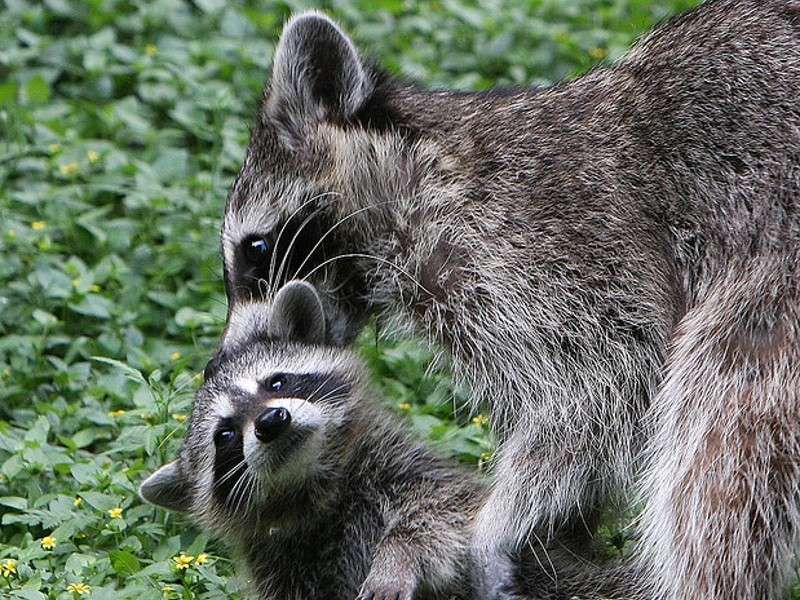 Place it as closely as possible to where the baby raccoon was discovered. In case there is a tree in the vicinity, place it at the base of the tree. Raccoons will rarely nest at trees, placing it next to a building or structure will work too. If you know where the raccoon nest is, place the box near the raccoon trail leading to the nest. During this process, do not wear perfume or have any fragrance that will deter the mother raccoon away.
Place it as closely as possible to where the baby raccoon was discovered. In case there is a tree in the vicinity, place it at the base of the tree. Raccoons will rarely nest at trees, placing it next to a building or structure will work too. If you know where the raccoon nest is, place the box near the raccoon trail leading to the nest. During this process, do not wear perfume or have any fragrance that will deter the mother raccoon away.
The baby raccoon should be left for a full night to see if the mother will rescue it. Raccoons are nocturnal animals, and will most likely come out in the cover of the night to look for its young when it’s most active. Ensure that the box enclosure is warm, and if possible, refresh your heat source. It’s also important that you do not attempt to feed the raccoon. Keeping the baby raccoon hungry is key to getting the mother to find it. A hungry baby raccoon just like a human child will cry when hungry calling its mother.
If you live in a noisy area, you could leave a sign next to the cardboard box, letting others know that the baby raccoon is waiting for its mother.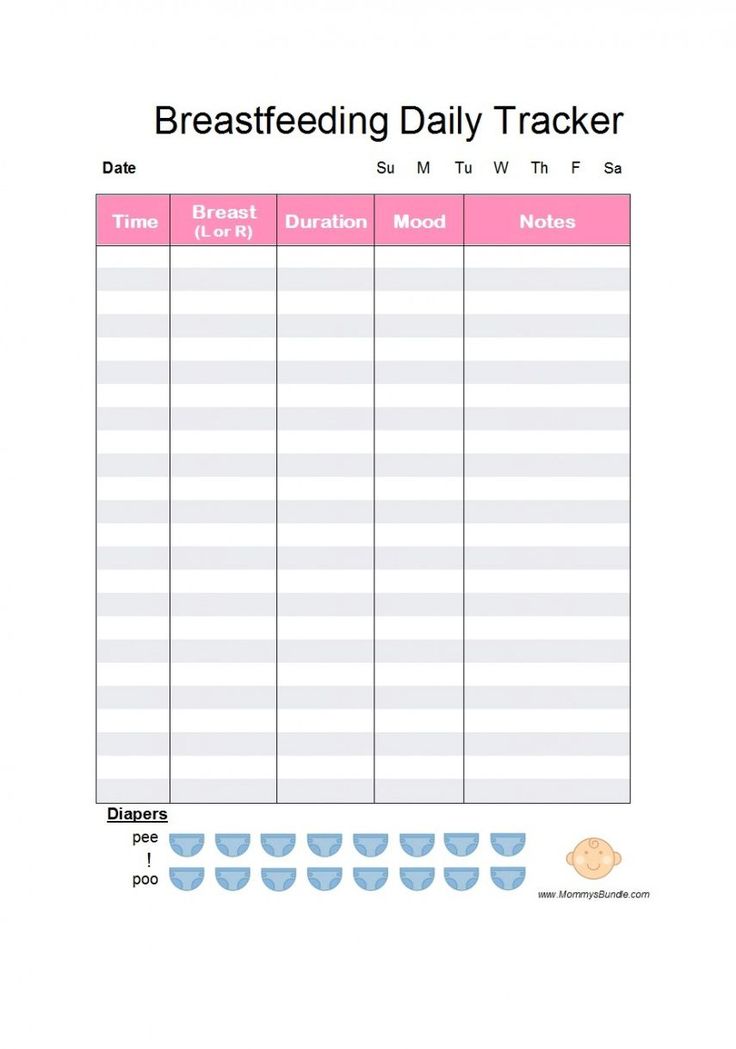 Alternatively, you could take the baby and place it in a dark, secure location until sunset when everything cools down. Remember, you need to leave the baby raccoon out for a single full night to give the mother a chance to find it.
Alternatively, you could take the baby and place it in a dark, secure location until sunset when everything cools down. Remember, you need to leave the baby raccoon out for a single full night to give the mother a chance to find it.
In case the mother doesn’t come back for the baby after leaving it outside for a full night, the baby could probably be an orphan. Its rare for a mother raccoon to abandon it’s young, however, if something happens to the mother while she’s out foraging, she might not be capable of getting back to her litter. In such a scenario, contact your local wildlife removal service for advice. All these factors can impact raccoon removal prices.
What do you do when you find an abandoned baby raccoon?
Sometimes, baby raccoons and mothers get separated due to different reasons. If you bumped into a baby raccoon in your property without its mother, the first thing you need to do is access its well-being. Check if:
- The baby is cold or lethargic
- Is the baby raccoon coat patchy or matted?
- Is its head tilted?
- Is it bleeding?
- Does it have any broken limbs?
- Did you find the dead mother?
- Does the baby raccoon have abrasions?
If the answer to the above questions is yes, then reuniting the baby raccoon back to its mother is no longer an option.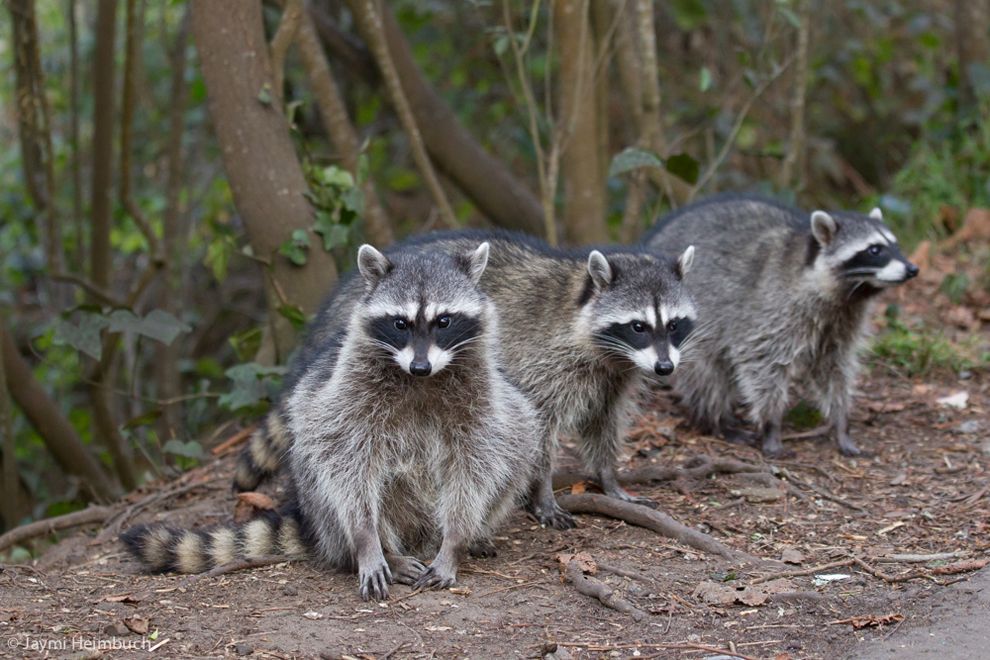 The baby raccoon will need to get to a wildlife rehabilitation center immediately.
The baby raccoon will need to get to a wildlife rehabilitation center immediately.
What scenario would make a baby raccoon an orphan?
- Sometimes the babies get trapped inside the nest, and the mother is unable to get to them.
- In rare cases, the mother abandons the baby with reasons best known to her; sometimes, she is unable to provide to all her babies.
- Mother was trapped and relocated or killed, and the babies were found later
- The mother was in the process of moving the babies to a new nest, but she can only carry one pup at a time.
When you find the abandoned baby raccoon, regardless of the time of the year, make sure that the babies are warm to the touch before you get to reunite them. You could use a warm water bottle with a sock to keep warm. Make sure the water bottle doesn’t get cold. When the water bottle gets cold, it will suck the warmth out of the babies. Also, do not attempt to feed the raccoons. If you are certain that the mother has abandoned them, and you have left them out for a whole night without rescue, call your local wildlife removal service or animal control. Avoid handling the raccoons with your bare hands, and keep them out of reach from pets and children. Raccoons often have parasites, and they could easily transfer them to you when you handle them.
If you are certain that the mother has abandoned them, and you have left them out for a whole night without rescue, call your local wildlife removal service or animal control. Avoid handling the raccoons with your bare hands, and keep them out of reach from pets and children. Raccoons often have parasites, and they could easily transfer them to you when you handle them.
Update Articled: January 23, 2020
How to feed a raccoon puppy | House of the Raccoon
Tiny
So, the long-awaited baby is home! What's next? How to feed a raccoon puppy ? What else is needed for him to survive and grow up healthy and cheerful? In short, the following is required: 1) Determine the approximate age of puppy and, more importantly, its development. 2) Feed correctly 3) Do massages 4) Provide a comfortable temperature and a safe place
Only puppies older than 2 weeks can be kept like this during feeding! NOTE!
Raccoon
All these moments are very important for the survival and rearing of the baby raccoon . None of them can be passed over as less significant. Let's take a look at each of these points in order and in as much detail as possible. So definition of age and development. Everything else depends on this. The age of a raccoon and its development are two different factors. In dogs and cats, most often the specific age of the puppy implies a specific development. In raccoons the situation is much more complicated. For example: Last year, one owner had two females at about the same time brought raccoon puppies . The conditions of keeping, feeding and care for both female raccoons were the same. Only the age of females and males-fathers of raccoon puppies differed. At the age of 3 weeks, the puppies of both females were about the same size, weight and behavior. But by 5 weeks, weight and behavior began to differ significantly. The babies of the first female at 5 weeks old began to open their eyes and actively crawl around the den. The second mother's children began to open their eyes only at 8 weeks.
None of them can be passed over as less significant. Let's take a look at each of these points in order and in as much detail as possible. So definition of age and development. Everything else depends on this. The age of a raccoon and its development are two different factors. In dogs and cats, most often the specific age of the puppy implies a specific development. In raccoons the situation is much more complicated. For example: Last year, one owner had two females at about the same time brought raccoon puppies . The conditions of keeping, feeding and care for both female raccoons were the same. Only the age of females and males-fathers of raccoon puppies differed. At the age of 3 weeks, the puppies of both females were about the same size, weight and behavior. But by 5 weeks, weight and behavior began to differ significantly. The babies of the first female at 5 weeks old began to open their eyes and actively crawl around the den. The second mother's children began to open their eyes only at 8 weeks. And active crawling out of the lair began at 9weeks. The babies of the first female at that time already saw perfectly well, kept well on their paws and began to try food from their mother's bowl. They were painlessly transferred to soaked dry food for small puppies under the mother at 7 weeks. The babies of the second mother, up to 12 weeks, had to be bottle-fed with a milk-banana mixture, and only by 16 weeks they began to eat solid food and firmly stood on their paws. This is the difference I have in mind when I talk about development. So, we examine our baby: 1) how confidently does he hold on to his paws, does he completely raise the body above the ground or do the paws spread and only sometimes does the baby collect them under him? Until the baby fully confidently stands on its paws, it will have to be fed from a bottle with a banana-milk mixture. Not to be confused with braiding the paws while moving! For a long time, the baby will learn to control them, especially when cornering, but he must confidently keep his body on them.
And active crawling out of the lair began at 9weeks. The babies of the first female at that time already saw perfectly well, kept well on their paws and began to try food from their mother's bowl. They were painlessly transferred to soaked dry food for small puppies under the mother at 7 weeks. The babies of the second mother, up to 12 weeks, had to be bottle-fed with a milk-banana mixture, and only by 16 weeks they began to eat solid food and firmly stood on their paws. This is the difference I have in mind when I talk about development. So, we examine our baby: 1) how confidently does he hold on to his paws, does he completely raise the body above the ground or do the paws spread and only sometimes does the baby collect them under him? Until the baby fully confidently stands on its paws, it will have to be fed from a bottle with a banana-milk mixture. Not to be confused with braiding the paws while moving! For a long time, the baby will learn to control them, especially when cornering, but he must confidently keep his body on them.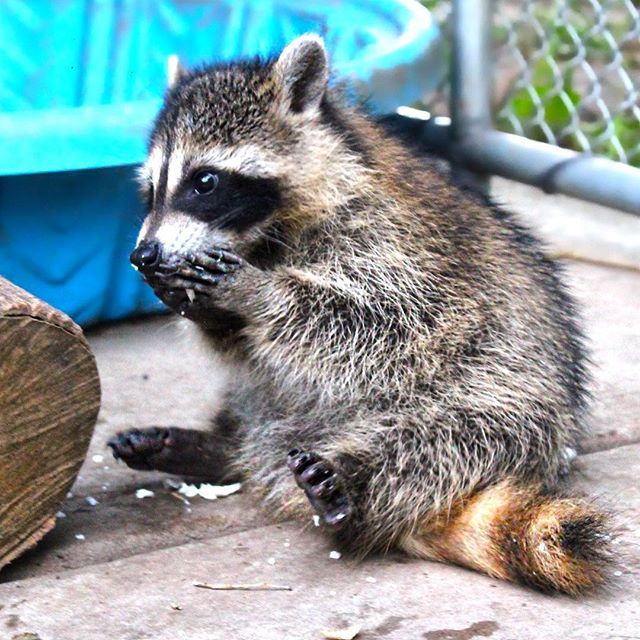 2) Eyes. Only if the baby has clean, without blue lanyards, completely open, meaningfully looking eyes, can he be fed “in an adult way”. If there is an infantile languor (blueness) on the eyes, if the gaze is wandering and inattentive, your food is in the bottle. So, we have formed two types of baby's age: for a bottle and for soaked food. And you can’t confuse them, ruin the baby! While the baby is feeding from a bottle, your obligatory worries are added: 1) Sterilization of the bottle 2) Massage of the tummy and anus until the result. 3) Temperature control
2) Eyes. Only if the baby has clean, without blue lanyards, completely open, meaningfully looking eyes, can he be fed “in an adult way”. If there is an infantile languor (blueness) on the eyes, if the gaze is wandering and inattentive, your food is in the bottle. So, we have formed two types of baby's age: for a bottle and for soaked food. And you can’t confuse them, ruin the baby! While the baby is feeding from a bottle, your obligatory worries are added: 1) Sterilization of the bottle 2) Massage of the tummy and anus until the result. 3) Temperature control
where to buy a raccoon
DO NOT hold the baby during feeding!!!!
4) Sucking reflex compensation (finger). At this age, babies are not yet able to regulate their body temperature. Easy to catch cold and overheat. This issue is best solved by placing the raccoon in a rather large cardboard box with high walls. We cover the box with terry towels. In one of the corners we put plastic one and a half liter bottles with warm water. When the baby is cold, he will climb into this corner. Bottles can be replaced with heating pads. But do not forget, firstly, to change the water more often as it cools down, and secondly, make sure that the baby has somewhere to crawl if it gets hot. These recommendations do not apply to babies who do not actively crawl themselves. How to deal with them, I will tell separately. Feeding babies : So, very young babies, before opening their eyes, you can try to feed them with cat's milk replacer. NEVER FEED MILK!! This applies to all types of milk: cow's, goat's, lactose-free... There were cases of successful nursing in Russia, but there were also sad stories. Therefore, I decided to clarify this issue with foreign colleagues from the Forest Infant Rehabilitation Center in Canada. Their advice can be read here. Not every mixture is suitable - a milk replacer. In Russia, it is desirable to find one. If there are discrepancies in the articles, please clarify in the comments: now we are closely studying this issue.
When the baby is cold, he will climb into this corner. Bottles can be replaced with heating pads. But do not forget, firstly, to change the water more often as it cools down, and secondly, make sure that the baby has somewhere to crawl if it gets hot. These recommendations do not apply to babies who do not actively crawl themselves. How to deal with them, I will tell separately. Feeding babies : So, very young babies, before opening their eyes, you can try to feed them with cat's milk replacer. NEVER FEED MILK!! This applies to all types of milk: cow's, goat's, lactose-free... There were cases of successful nursing in Russia, but there were also sad stories. Therefore, I decided to clarify this issue with foreign colleagues from the Forest Infant Rehabilitation Center in Canada. Their advice can be read here. Not every mixture is suitable - a milk replacer. In Russia, it is desirable to find one. If there are discrepancies in the articles, please clarify in the comments: now we are closely studying this issue.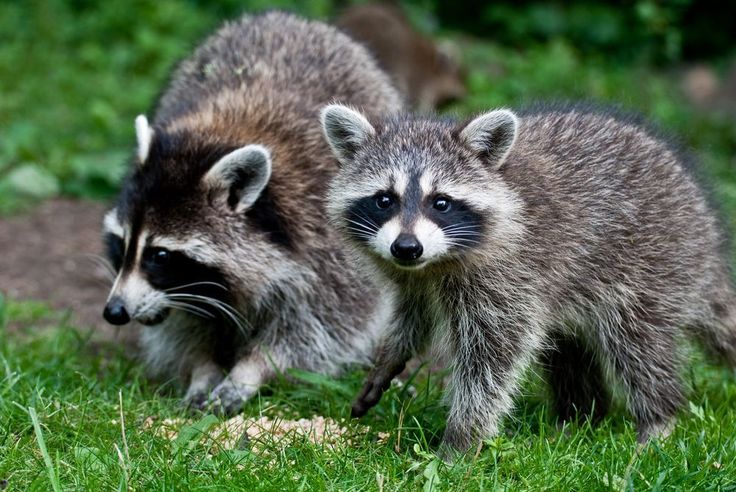
Here it is important not to overfeed the baby, but also not to starve. After feeding, the raccoon puppy should calmly sleep sweetly for 3-4 hours. If he wakes up earlier, you are underfeeding; if he sleeps further, you are overfeeding. Daily weighing is not unimportant! Weight must always increase! Let just a little, but grow. Therefore, you will definitely need electronic scales. Also during this period, massage of the tummy and perineum is especially important. Enetenok himself can neither write nor poop. Massage of the tummy is performed immediately after feeding and in the interval between feedings. The massage is performed as follows: with soft circular movements clockwise we stroke the tummy, slightly pressing. After two or three minutes of massage, lift the ponytail almost perpendicular to the back and slap the anus with gentle movements, lifting the ass with an upward movement. In case of constipation, first lubricate the ass with plenty of Vaseline. Next, we put the raccoon on the palm, so that the index finger is on the raccoon's pussy, and pat it until urination.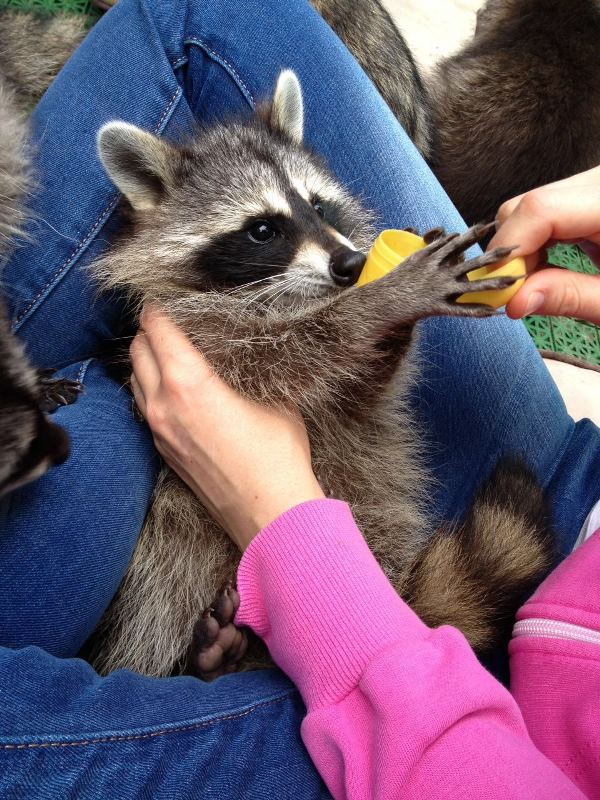 Ideally, the chair should be after each feeding. And if this does not happen, we repeat the massage every 40-50 minutes until the result. The main thing is that the tummy is soft and painless. In case something worries you, read "first aid for a baby: tummy hurts." If the baby drinks 40 ml of milk, eagerly, without releasing the bottle, but sleeps for only an hour and wakes up again, there is a reason to increase the nutritional value of milk. In each feeding, we begin to add a slice of banana to milk, we start with a piece of banana 1 cm thick. The next feeding is already 3 cm and if diarrhea does not appear, in the next feeding we already make a mixture of half a banana and 100 ml of milk. If the baby is weakened, leave the banana share small and add 1 tablespoon of rice water. Banana + milk - the main mixture for feeding a baby raccoon of the first period of development. When loose stools appear, a spoonful of rice broth or a spoonful of oak bark decoction is added to the mixture. If mucus appears in the stool, an admixture of blood, or it has acquired a green color or a fetid odor, these are good reasons to see a doctor.
Ideally, the chair should be after each feeding. And if this does not happen, we repeat the massage every 40-50 minutes until the result. The main thing is that the tummy is soft and painless. In case something worries you, read "first aid for a baby: tummy hurts." If the baby drinks 40 ml of milk, eagerly, without releasing the bottle, but sleeps for only an hour and wakes up again, there is a reason to increase the nutritional value of milk. In each feeding, we begin to add a slice of banana to milk, we start with a piece of banana 1 cm thick. The next feeding is already 3 cm and if diarrhea does not appear, in the next feeding we already make a mixture of half a banana and 100 ml of milk. If the baby is weakened, leave the banana share small and add 1 tablespoon of rice water. Banana + milk - the main mixture for feeding a baby raccoon of the first period of development. When loose stools appear, a spoonful of rice broth or a spoonful of oak bark decoction is added to the mixture. If mucus appears in the stool, an admixture of blood, or it has acquired a green color or a fetid odor, these are good reasons to see a doctor. The ways of feeding the baby of the first period of development are varied and are selected from the preferences of the baby. Someone successfully learns to suck a nipple on a bottle, someone can be fed only from a syringe without a needle and kutya, someone begins to lap from a saucer, getting into it with all four paws. In Canada, feeding through a wheat straw or a cocktail tube directly from the owner's mouth is popular. Raccoons are stubborn and stubborn. And that's how they are born. And no hunger will make a youngster suck a pacifier if he doesn't like it. The first attempts in any case will take place with a fight and squeals. But if you are attentive and patient, you will quickly feel for yourself exactly how, in what way your baby agrees to eat. I wish you success.
The ways of feeding the baby of the first period of development are varied and are selected from the preferences of the baby. Someone successfully learns to suck a nipple on a bottle, someone can be fed only from a syringe without a needle and kutya, someone begins to lap from a saucer, getting into it with all four paws. In Canada, feeding through a wheat straw or a cocktail tube directly from the owner's mouth is popular. Raccoons are stubborn and stubborn. And that's how they are born. And no hunger will make a youngster suck a pacifier if he doesn't like it. The first attempts in any case will take place with a fight and squeals. But if you are attentive and patient, you will quickly feel for yourself exactly how, in what way your baby agrees to eat. I wish you success.
feeding raccoon puppies
| Age (weeks) | Feeding formula | Important | Special care |
| Birth to 1 week 60-140 grams Eyes and ears closed muzzle mask and tail rings barely visible scanty fluff of fur on the back and sides, no fur on the belly
| Serving 3 - 7 ml.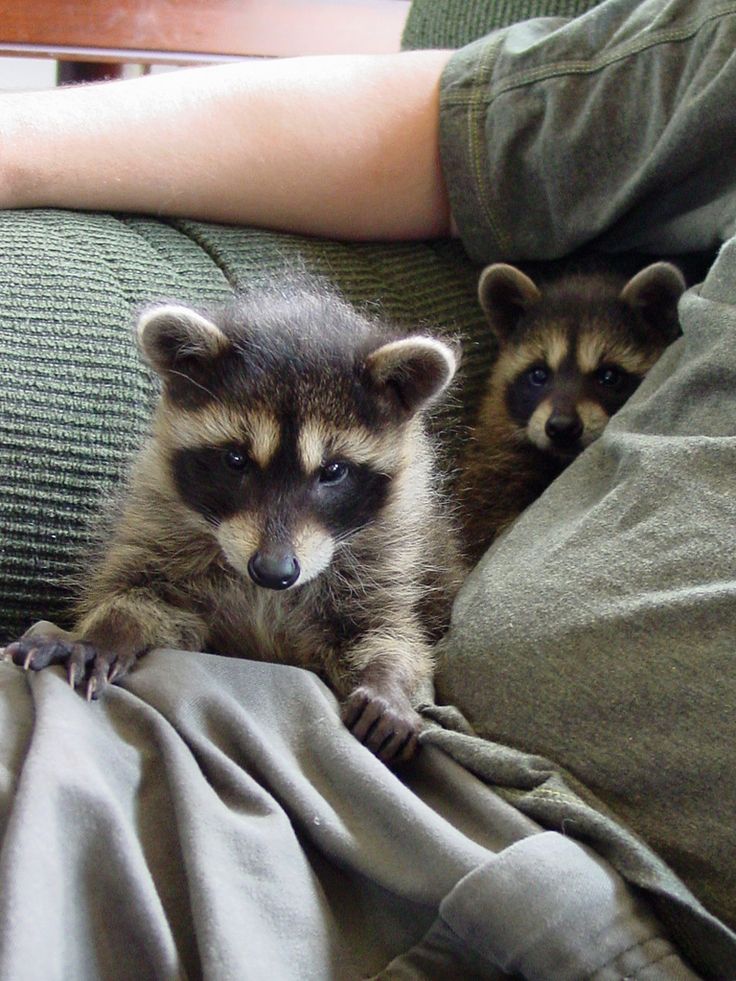 nutrition (this is approximately 5% of body weight) 7-8 times a day every 2.5 - 3 hours, including night feedings. An example of a feeding schedule for 8 times a day: 7:00,9:30, at 12 :00, 14:30, 17:00, 19:30, 22:00, plus once during the night. nutrition (this is approximately 5% of body weight) 7-8 times a day every 2.5 - 3 hours, including night feedings. An example of a feeding schedule for 8 times a day: 7:00,9:30, at 12 :00, 14:30, 17:00, 19:30, 22:00, plus once during the night. Example of a feeding schedule for 7 times a day: 7:00, 10:00, 13:00, 16:00, 19:00, 22:00, plus one during the night. Feeding formula should be warmer than body temperature as it cools quickly as it passes through the nipple or feeding syringe, so keep the feeding bottle in a larger cup of warm water while feeding. | Keep baby warm in a pet carrier or small closed box with breathing holes. Protect them from drafts, and create a cozy nest with several layers of soft fabric. Change bedding twice a day, and wash them without using rinse aid because the smell is bad for babies' respiratory system. Provide outside warmth by putting a heating pad or a bottle of warm water wrapped in a soft cloth. Make sure it doesn't leak and isn't too hot for the baby to cuddle up with.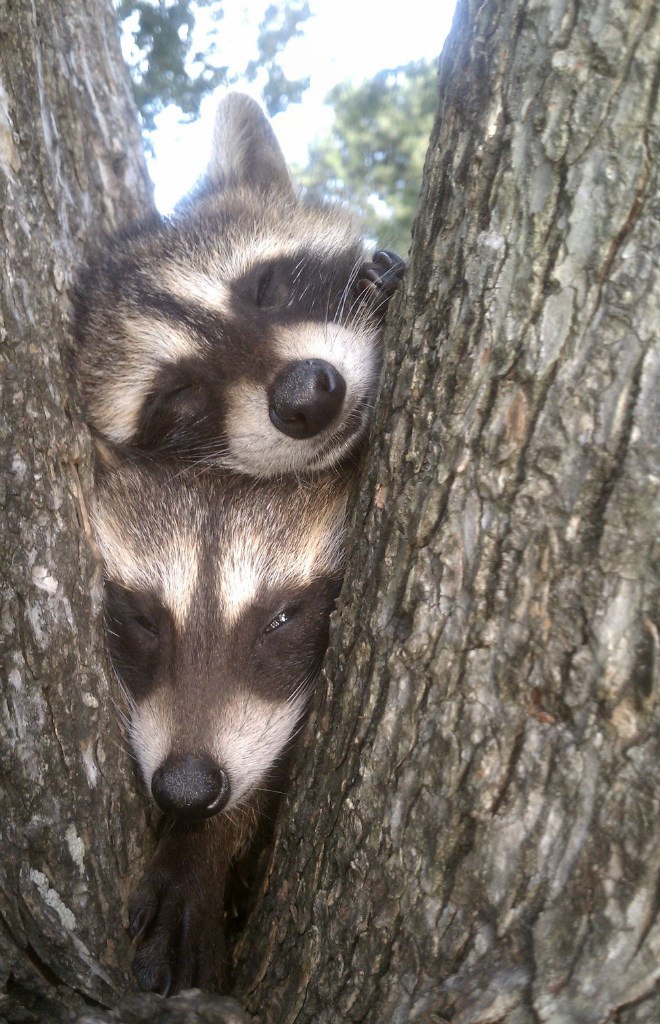 Change before next feeding or when cool. Change before next feeding or when cool. | Keep baby warm at all feeding times by wrapping in a warm cloth, cage or box at all times with a heating pad or hot water bottle. Feed him in a quiet, warm environment with no distractions. Try to provide extra sucking time by wearing latex gloves over light cotton gloves and letting them suck your fingers for 10 or 15 minutes after each feed. Stimulate him at every feed by gently stroking the genital area with a wet finger or Q-tip or soft damp cloth until he has finished urinating and/or defecation. Thoroughly wash face, neck and chin after each feeding. After the baby has digested the food, the stool should be formed and golden brown. Maintain proper hygiene, as raccoon feces can contain parasites. |
| 2 weeks190-225 grams slightly pubescent no belly fur Eyes and ears closed | Serving 9.5 - 11.3 ml nutrition (that's about 5% of body weight) 6 times a day every 3 hours Example of a feeding schedule for 6 times a day: 7:00, 10:00, 13:00, 16:00, 19:00, 22:0 |
Same as |
Same as |
3 weeks 320-400 gr. full fur Eyes open at about 3 weeks (18 to 24 days of age)
| Serving 16 - 20 ml nutrition (that's about 5% of body weight) 6 times a day every 3 hours | Same as | The same Since babies become more inquisitive after opening their eyes, it is important to continue feeding them in a quiet room without any distractions. Babies can already suck from a bottle on their own. If you have several babies, you can secure several bottles on a wooden base with rubber rings. |
| 4 weeks450-550 grams
| Serving 22.5 - 27.5 ml nutrition (5% of body weight) or Serving 31.5 - 38.5 ml (7% of body weight) 5 times a day every 3.5 hours Example of a feeding schedule for 5 times a day: 7:00, 10:30, 14:00, 17:30, 21:00 | Same as | Same as |
| 5 weeks600-700 grams | Serving 30-35 ml nutrition (5% of body weight) OR Serving 42 - 49 ml (7% of body weight) 4 times a day every 4 hours Example of a feeding schedule for 4 times a day: 7:00, 11:00, 15:00, 19:00 | Same as | After a week or two of babies have opened their eyes, they can urinate on their own, you can start to teach them to go to the toilet on paper towels. You can encourage them to urinate so they know where to go. Constantly monitor the cleanliness in the cage, change paper towels in a timely manner. You can encourage them to urinate so they know where to go. Constantly monitor the cleanliness in the cage, change paper towels in a timely manner. |
| 6 weeks750-820 grams | Serving 37.5 - 41ml nutrition (5% of body weight) OR Serving 52.3 - 55.4 ml (7% of body weight) 4 times a day every 4 hours Example of a feeding schedule for 4 times a day: 7:00, 11:00, 15:00, 19:00 Solid foods, good quality puppy food and cut fruit (grapes and bananas are preferred) may be introduced. Soak puppy food with nutrition first or mix banana puree with nutrition. Heat in the microwave until the granules are completely dissolved.
| Provide a source of clean drinking water, wash a cup of water several times a day and change the water. | You can use sand or kitten litter for potty training. The cage and tray should be cleaned and washed frequently, and the bedding should be changed daily. |
| 7 weeks900-1000 grams | Serving 45 - 5 0ml nutrition (5% of body weight) OR Portion 63 - 70 ml (7% of body weight) 4 times a day every 4 hours Example of a feeding schedule for 4 times a day: 7:00, 11:00, 15:00, 19:00 After they eat puppy food, stop soaking it and increase the amount of solid food. | Same as | Same as |
| 8 - 10 weeks 1000-1450 g | Serving 50 - 72.5ml nutrition (5% of body weight) OR Serving up to 80 ml per feeding 3 times a day every 5 hours Example of a feeding schedule for 3 times a day: 8:00, 13:00, 18:00 | Same as | Weaning Note: Do not increase feed volume above 80 ml, feed more solid food, and if the raccoons are not fed, they will be forced to eat solid food. |
| 10 - 16 weeks Raccoons born in the spring (March - May) should weigh about 6-7 kg by August-September at 16-18 weeks. | Feeding puppy food (about 2/3 of the diet) and fresh fruits and vegetables (about 1/3 of the diet). Adult dog food does not meet all the needs of a growing animal. | In the cage, make hammocks from hard fabric and ropes, various climbing frames, hang swings from tires. |
You can read more about keeping raccoons at home in the book "Poloskun Raccoon" https://ridero.ru/books/enot-poloskun/
Baby raccoon: what are the little raccoons called?
- Post author: Here Raccoon nuances of care and feeding.
- Raccoons do not like to be left alone for a long time, so it is better to lock him in the aviary for the night and hours of your absence. So he will not be able to smash the apartment out of boredom or loneliness.
- Raccoons are very active animals. In the wild, they spend their energy on hunting, climbing trees. Therefore, you should organize your home space in such a way that the animal can afford to be active without harming your home. Ideally, you can install a children's sports complex with ladders and crossbars.

- Don't leave human food in plain sight. Remember that these animals are omnivores, and therefore they can eat almost everything that falls into their paws. And this can be harmful to the fragile organism of the animal.
- Remove any potentially dangerous items from your home. A curious raccoon can easily get hurt looking for entertainment.
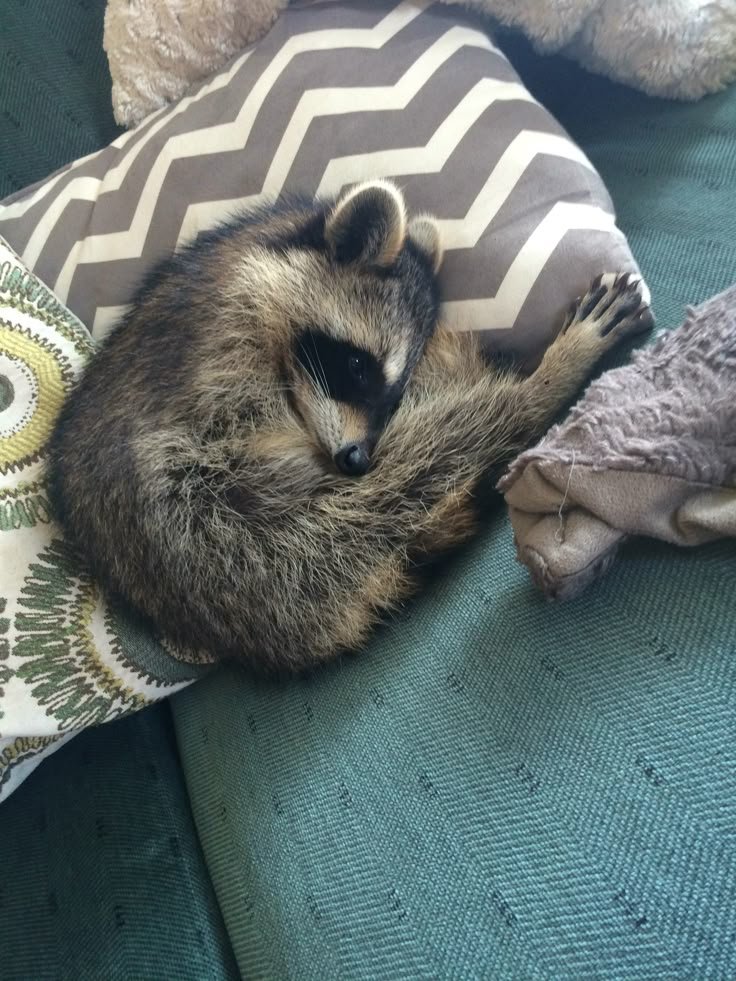 After all, a small animal, like a human child, needs a special approach and favorable conditions. We will tell you what you need to consider when raising and keeping newborn raccoons.
After all, a small animal, like a human child, needs a special approach and favorable conditions. We will tell you what you need to consider when raising and keeping newborn raccoons. What is the name of a baby raccoon
The name of an adult is a raccoon or a female raccoon. But their cubs are called puppies. Regardless of what gender they are. Sometimes on the Internet you can see how small animals are called raccoons or raccoons. But such names are incorrect and only animal lovers or owners use them among themselves.
The first days of a little raccoon's life
In the first month of life, puppies are still quite small and weak. And they cannot move in space, eat or go to the toilet without the help of a mother or a person. After 30 days, they begin to awkwardly move around the house and explore the world around them. But at this age they are still small and need the help of the owner. Starting from the second month, puppies begin to socialize. They become strong enough to move around without the help of a “parent”, eat adult food, go to the toilet on their own, and so on.
Caring for raccoon puppies at home
A raccoon is not a docile animal. And even at such a young age, he has the habits and character of an adult predator. Therefore, before starting a pet, we advise you to weigh all the pros and cons and study the information on caring for an animal. This is important so that the raccoon does not grow up wild and does not harm the people around him and his home.
So, what you need to consider:
It's all about organizing your home. Now let's move on to walking. While the raccoon is very small, he needs the sun's rays. Therefore, you should regularly walk your puppies regardless of weather conditions. Ideally, you should do this twice a day. While the animal has not been vaccinated, walk it on your hands so that the animal does not become infected with anything and does not get sick. Introduce walks gradually - start with 5 minutes in the fresh air, and then gradually bring them up to an hour.
You can purchase a carry bag for ease of movement. And for walking - a harness and a leash.


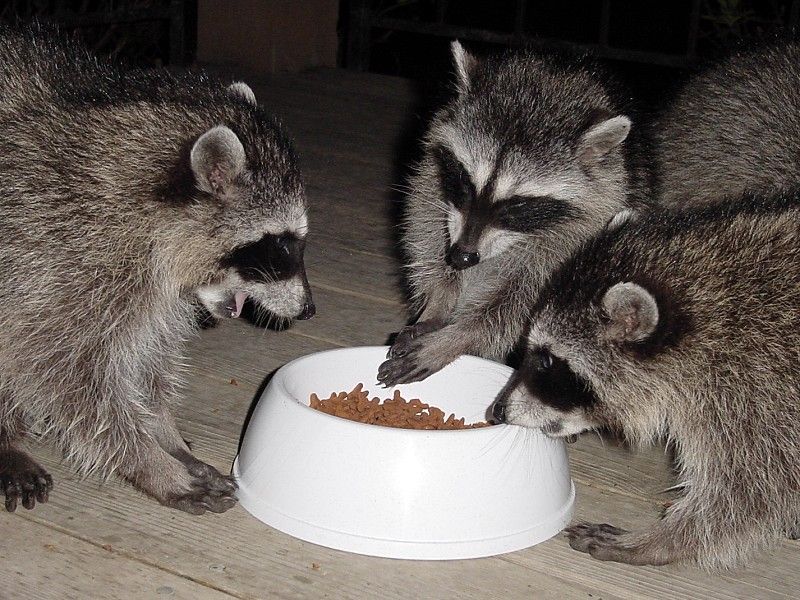 Provide toys - natural ones are best - acorns, cones, small twigs, bark, limestone chunks, shells, rocks/pebbles, flower seeds, etc., but hard dog toys, cat toys, children's toys are fine too.
Provide toys - natural ones are best - acorns, cones, small twigs, bark, limestone chunks, shells, rocks/pebbles, flower seeds, etc., but hard dog toys, cat toys, children's toys are fine too. 